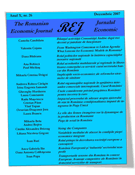Abstract:
This study aimed to investigate Pakistan’s bilateral trade flows with major trading partners. Panel data for the time period 1990-2010 with a frequency of two years was analyzed. Gravity model was employed for the analysis of the data and proved to be successful in explaining Pakistan’s bilateral trade flows by high values of R-square and adjusted R-square. Results revealed that
GDP and GDP Per capita positively affect trade volume while distance and dummy variable for cultural similarities showed a negative relationship towards trade volume. Ratio of actual trade to predicted trade determined for each of the partner country for the year 2010 revealed that Japan, Turkey, Malaysia, India and Iran have greater unrealized trade potential with Pakistan which leads to policy implications.
